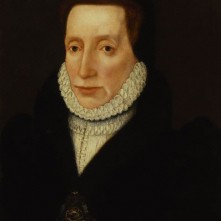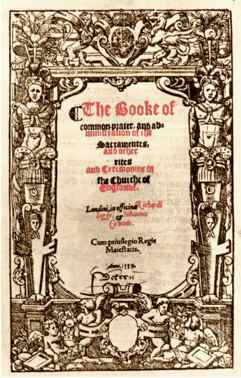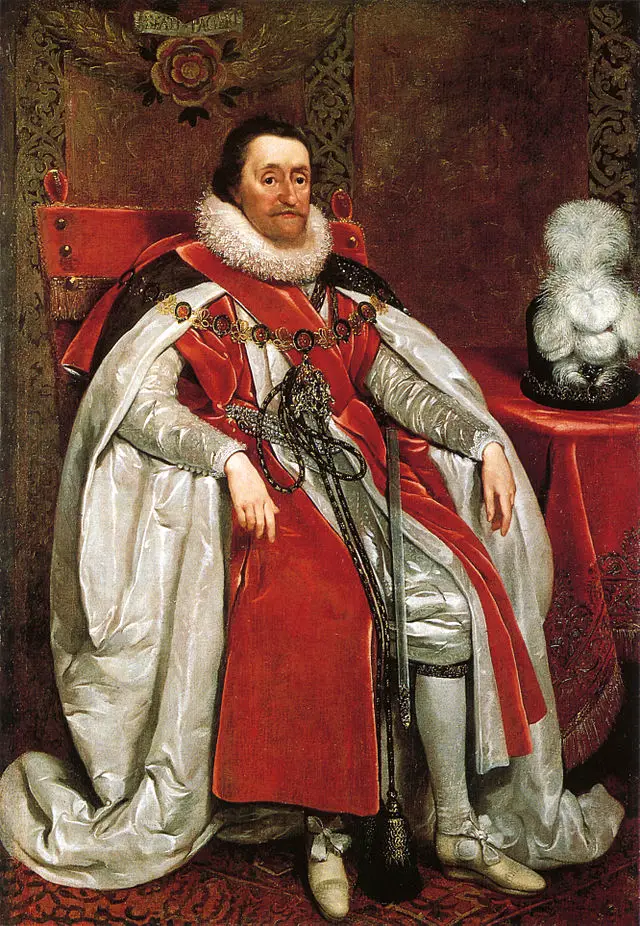20 June

Margaret Douglas
1560 – Death of Francis Hastings, 2nd Earl of Huntingdon, at Ashby-de-la-Zouch. Francis was married to Katherine Pole, daughter of Henry Pole, Baron Montagu, but was fortunate to survive the fall of the Poles in 1538. His son, Henry, was educated with Henry VIII's son, the future Edward VI, who made Hastings a member of his Privy Council in 1550. Hastings and his son were imprisoned in the Tower by Mary I for their support of Lady Jane Grey in 1553, but were pardoned a few months later. He served Edward VI, Mary I and Elizabeth I as Lord Lieutenant of Leicestershire.
1565 – Margaret Douglas sent to the Tower of London by Elizabeth I after the announcement of the betrothal of Mary, Queen of Scots and Lord Darnley, Margaret's son. She was released after Darnley's murder in February 1567.
1567 - The discovery of the Casket Letters. Click here to read more about these letters.
1568 – Death of Armagil Waad (Wade), Chief Clerk of the Privy Council and member of Parliament during Edward VI's reign, at Belsize Park, Hampstead. He was buried in Hampstead Church. Waad lost his office and his seat in Parliament in Mary I's reign.
1584 – Hanging of Dermot O'Hurley, Catholic Archbishop of Carshel and martyr, at Hoggen's Green, just outside Dublin. He had been linked with the Roman Inquisition and was tortured by having his feet out in tin boots and then put in front of a fire. He was beatified 27th September 1992.
1585 – Death of Henry Percy, 8th Earl of Northumberland, on the night of the 20th/21st June in the Tower of London. Northumberland had, allegedly, shot himself through the heart, although it was rumoured that he was murdered by Sir Christopher Hatton on the orders of Elizabeth I's government. Northumberland had been imprisoned in the Tower in January 1584 for his Catholic beliefs and his involvement in plots to do with Mary, Queen of Scots. He was laid to rest in the chapel of St Peter ad Vincula at the Tower.
1595 – Burning of Walter Marsh, spy and Protestant martyr, in Rome's Campo dei Fiori. Before he was burned, he had his hands and tongue cut off. He had been accused of spying on Catholics for Elizabeth I, and of committing offences against Catholics.
21 June
1494 – Birth of George Cavendish, Cardinal Wolsey's Gentleman Usher. Cavendish wrote a biography of Wolsey, “The Life and Death of Cardinal Wolsey”, and a collection of tragic poems, “Metrical Visions”. His poetry and biography are widely used by Tudor historians as primary sources.
1529 – Death of John Skelton, poet, clergyman and former tutor to Henry VIII when he was prince, at Westminster. He was buried in St Margaret's, Westminster. His works included “Garlande of Laurell” and “The Boke of Phyllyp Sparowe”.
1553 – Letters patent issued changing Edward VI's heir from his half-sister, Mary, to Lady Jane Grey.
1596 – Death of Sir John Wingfield, soldier. He was shot in the head after being wounded in the thigh, and being unable to walk, in the attack on Cadiz. He was buried in the Cathedral at Cadiz.
1612 – Death of James Elphinstone, 1st Lord Balmerino, administrator and Judge, at Balmerino. Elphinstone was James VI's secretary of state, but was attainted as a traitor and sentenced to death in 1609 after he tricked the King into signing a letter to the Pope. He escaped death, but was imprisoned until 1609.
22 June
1477 – Birth of Thomas Grey, 2nd Marquis of Dorset, courtier and constable of Warwick Castle and of Kenilworth Castle. He was the third son and heir of Thomas Grey, first Marquis of Dorset, and his wife, Cicely.
1528 – Death of William Carey, courtier, distant cousin of Henry VIII and husband of Mary Boleyn. He died of sweating sickness, leaving behind his wife and two children, Catherine and Henry.
1535 - John Fisher, Bishop of Rochester, was beheaded on Tower Hill. He was one of the many victims of Henry VIII and was executed for treason, for refusing to take the “Oath of Succession” and accept Henry as the Supreme Head of the Church of England.
1536 - Henry VIII’s eldest daughter, Mary, finally submitted to her father and accepted her father as Supreme Head of the Church in England and the invalidity of her parents' marriage.
1547 – Death of George Lokert (or Lockhart), Dean of Glasgow, logician and theologian. Lokert studied at the University of Paris and was prior of the Collège de Sorbonne.
1557 – Death of Richard Woodman, Protestant martyr. He was burnt at Lewes, in Sussex, with nine other martyrs after he refused to recant.
1599 – Death of Sir William Fitzwilliam, Lord Deputy of Ireland in Elizabeth I's reign, at Milton, Northamptonshire, after a long illness. He was buried at the church of Marham, Norfolk.
23 June
1556 – Baptism of Thomas Hood, mathematician and physician, at St Leonard Eastcheap. His works included the 1590 “The Use of the Celestial Globe in Plano, Set Foorth in Two Hemispheres”, the 1592 “The Use of Both the Globes Celestiall and Terrestriall”, the 1596 “Two Mathematicall Instruments, the Crosse-Staffe and the Jacobs Staffe” and the 1598 “The Making and Use of the Geometricall Instrument called a Sector”.1559 – Death of Thomas Dockray (Docwra), ecclesiastical lawyer and Master of the Stationers' Company. He was buried in the church of St Faith's under St Paul's. Dockray acted as a lawyer for the defence at the trial of Stephen Gardiner, Bishop of Winchester.
1576 – Death of Levina Teerlinc, painter and miniaturist, at Stepney. Originally from Bruges, Teerlinc, who was the daughter of Simon Benninck, a master illuminator, travelled to England in the 1540s. Teerlinc was court painter to Edward VI, Mary I and Elizabeth I, and produced many paintings and miniatures.
1586 – Death of Henry Cheke, translator and son of Sir John Cheke. He died in York and was buried in York Minster. Cheke's works included “A Certayne Tragedie Entituled Freewyl” and his translation of Tragedia del libero arbitrio.
1600 – Death of Richard Howland, Bishop of Peterborough, in his palace at Castor. He was buried in Peterborough Cathedral. Howland presided over the burial of Mary, Queen of Scots in 1587.
24 June
1509 - The joint coronation of Henry VIII and Catherine of Aragon at Westminster Abbey.1513 – Death of Sir Edmund Carew, administrator and soldier. Carew was killed at Thérouanne in Artois when the town was under siege by English troops. He was there as Master of the Ordnance. He was buried in the church of St Nicholas at Calais two days later.
1532 or 1533 – Birth of Robert Dudley, Earl of Leicester and favourite of Elizabeth I. Dudley was the fifth son of John Dudley, Duke of Northumberland, and his wife, Jane. Dudley served Elizabeth I as Privy Councillor and Governor-General of the Netherlands. There is some controversy over his birthday, with some of his contemporaries believing that he was born on exactly the same day as Elizabeth I (7th September 1533). However, it is now believed that he was born 24th June 1532 or 1533, most likely 1532, making him just over a year older than his Queen and great friend.
1604 – Death of Edward de Vere, 17th Earl of Oxford, courtier and poet. He was buried in the graveyard of the church of St Augustine, Hackney. Oxfordians believe that de Vere was actually the author of Shakespeare's works, and some people go as far as saying that de Vere was the son of Elizabeth I by Thomas Seymour.
25 June
1503 – Catherine of Aragon was formally betrothed to Prince Henry, the future Henry VIII, and second son of Henry VII. She had been married to Arthur, Prince of Wales, Henry VII's eldest son, but he died in 1501 after only six months of marriage.1533 – Death of Mary Tudor, Queen of France, the thirty-seven year-old sister of Henry VIII and wife of his friend Charles Brandon, Duke of Suffolk. She died at her home, Westhorpe Hall in Suffolk, and was buried at the local abbey in Bury St Edmunds, Suffolk. When the abbey was dissolved, however, her remains were moved to St Mary’s Church, Bury St Edmunds.
1539 – Baptism of courtier Gregory Fiennes, 10th Baron Dacre, the younger son of Thomas Fiennes, 9th Baron Dacre, and Mary, the daughter of George Neville, Baron Bergavenny.
1601 – Death of Peregrine Bertie, 13th Baron Willoughby, Beck and Eresby, at Berwick upon Tweed. He died of a fever. Bertie was the only son of Richard Bertie and Katherine, Duchess of Suffolk, 12th Baroness Willoughby de Eresby and the well known Protestant patron. Bertie was a soldier, nobleman, ambassador, Governor of Berwick upon Tweed and Warden of the East March.
26 June
1513 – Burial of Sir Edmund Carew, landowner, administrator and soldier, in the church of St Nicholas, Calais, after he was shot dead during the siege of Thérouanne in Artois.
1535 - A new commission of oyer and terminer was appointed for the county of Middlesex. The commission ordered the Sheriff of Middlesex to gather the Grand Jury on the 28th June at Westminster Hall. This was to try Sir Thomas More who, according to the indictment, had been “traitorously attempting to deprive the King of his title of Supreme Head of the Church”.
1568 – Death of Thomas Young, Archbishop of York, at Sheffield. He was buried in York Minster.
1576 – Death of Edward Dering, scholar, Church of England clergyman and controversial evangelical preacher, from tuberculosis at Thobie Priory in Essex. A collection of his works, which included sermons, lectures, prayers and letters, was first published in 1590.
1596 – Burial of Sir John Wingfield in the cathedral at Cadiz, Spain. He was shot in the head in the attack on Cadiz on 21st June. At Wingfield's funeral, “the generalls threw their handkerchiefs wet from their eyes into the grave” (Stow, 775) and the poet John Donne, who was a member of the expedition, composed an epigram as a tribute to Wingfield: “Farther then Wingefield, no man dares to go”.







Leave a Reply